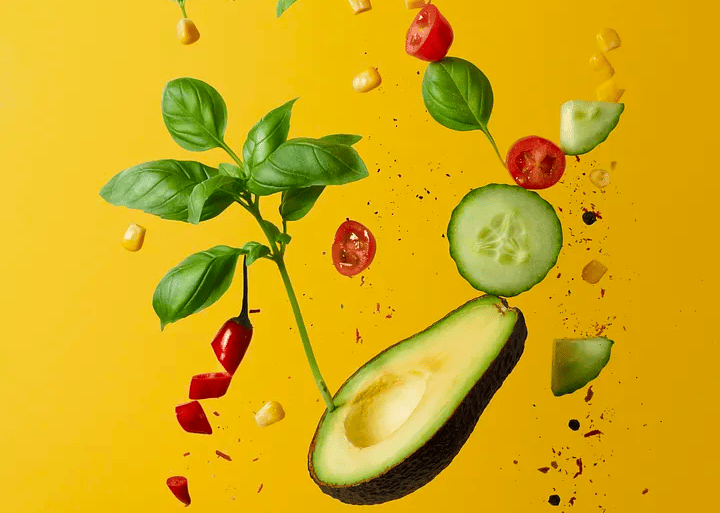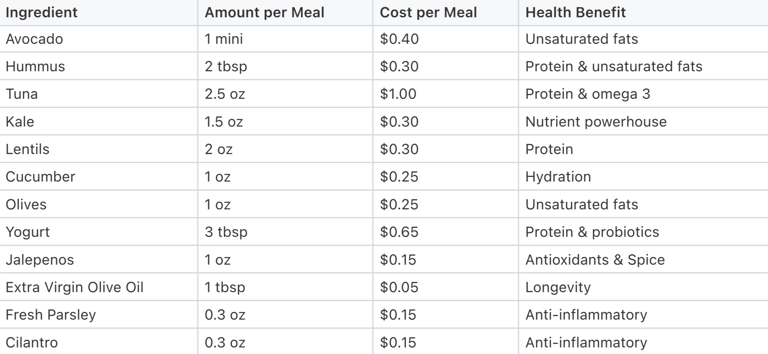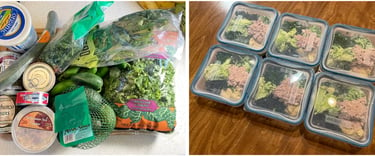An Optimally Healthy, Quick, and Affordable Meal I have Everyday (No Cooking Required)
In search of a quick, cost-effective, and health-conscious meal, I explore the benefits of cooking at home and introduces my go-to meal: a variation on the Mediterranean Santorini bowl, providing essential nutrients without the need for cooking, resulting in significant time and cost savings.
6/12/20235 min read
If, like me, you’re an “eat to live” kind of person, you might find yourself wrestling with the challenge of cooking nutritious and varied meals every day. Between time constraints and budget considerations, you’re probably on the hunt for options that are quick, cost-effective, and health-conscious. So, what’s the secret to striking this balance in your meals?
Result of “Healthy food” in unsplash. Credit: Tangerine Newt




Which fast meals are the healthiest
Firstly, it’s crucial to understand that, meals prepared at home tend to be healthier than those from restaurants (as well as more affordable). A study from National Institutes of Health [1] found a significant difference, primarily due to an increase in refined grains, sodium, and sugars in full-service restaurants. Quick-service restaurants were, of course, even worse.
Similarly, a study from the U.S. Department of Agriculture [2] demonstrated that food consumed away from home results in an increased calorie intake, more saturated fats, and less vegetables. Essentially, cooking at home is a way to ensure better control over your diet’s quality and nutritional content.
So, the question remains: what meals can we prepare at home that require minimal prep time, are cost-effective, and fulfill our necessary macro and micronutrient needs?
One might consider frozen ready meals, but these often have high levels of saturated fat and sodium [3]. Another option is minimal home prepared foods like, PB&J sandwiches, cereal, macaroni and cheese. One of the primary reasons this is bad is the insufficient protein, which is essential for combatting muscle loss and cardiovascular health decline as we age [4]. You’re also missing out on the necessary micronutrients you would normally get from vegetables.
Santorini Greece. Credit Photo by Heidi Kaden
My meal of choice
So, what meal has the fewest ingredients and preparation time but achieves all of the recommended micronutrients and the correct amount of complex carbohydrates, high quality fats, and protein? My answer to this question continues to change with time as I learn more and my access to certain foods change as I move, however, my current go-to meal is a variation on the Mediterranean Santorini bowl.
Mediterranean diets have been shown to be one the healthiest, as measured by all cause mortality, according to a meta-analysis study published this year [5].
Figure from “Comparison of seven popular structured dietary programmes and risk of mortality and major cardiovascular events in patients at increased cardiovascular risk: systematic review and network meta-analysis” [5]
And when looking at the ingredients of a Santorini bowl it’s easy to see why. The meal consists of a base like quinoa or couscous (I substitute lentils for the extra protein). Then there’s an array of Mediterranean vegetables (I include kale because it’s so nutrient dense). Then there’s some source of protein, either grilled meat or falafel (I use tuna as it can be bought ready to eat and it has a high omega 3). Then for dressing, there’s olive oil, zhug and tzatziki, which add more vegetable nutrients as well as taste with minimal sugar or processed foods.


Santorini bowl as imagined by midjourney
Here’s a breakdown of the ingredients for the way I make the meal for a 180lb male, as well as the reasons I include each ingredient. Keep in mind the cost will depend on region and the portion size will vary depending on your requirements.




Breakdown of a Santorini bowl. Costs determined from Trader Joes CA
You’re probably thinking this meal is a glorified salad… and you wouldn’t be wrong, but that’s the beauty of it.. there’s no cooking required. That means there’s no waiting around and minimal washing up. Start to finish, it takes me about 25 minutes to create 6 meals, which lasts me 3 days.
The total price of this meal is $3.95 per serving, which is less than the national average [6]. This cost can be brought down more if you’re willing to cook the lentils/quinoa/couscous from scratch. Also keep in mind that the national average for time spent on meal preparation is 37 minutes per day, according to the USDA [7]. The meal I’m suggesting comes out to a little over 8 minutes per day, or 30 minutes less than the national average, which at the American median wage of $27.50/hour [8], is $13 worth of time savings per day (or $6.50 per meal)!
Directions
If you are interested in making something like this meal for yourself then here are the steps…
Add kale to each container and drizzle olive oil (doing this first means kale sits in the olive oil and softens)
Process the parsley, cilantro, and jalapeños. Add this zhug mixture to each container
Process cucumber. Add yogurt and cucumber to each container for tzatziki
Add each of the remaining ingredients to each of the containers
Wash the food processor and wipe surfaces
Enjoy!
3 days worth of food prepared in 25 minutes
Conclusion
If you’re looking for a way to eat well without spending too much time or money on cooking, try making a Santorini bowl. It’s a simple and tasty meal that has many health benefits and can be customized to your liking. You can also make it ahead of time and store it in the fridge for up to three days.
I hope this blog post has inspired you to create your own optimized meal based on the principles and methods behind this recipe. You can experiment with different grains, vegetables, cheeses, proteins, dressings, and herbs to suit your preferences and needs.
Let me know what you think, and if you enjoyed this post, please share it with your friends and family who might also benefit from it.
Happy eating!
Bibliography
[1] https://www.ncbi.nlm.nih.gov/pmc/articles/PMC8398800
[2] https://papers.ssrn.com/sol3/papers.cfm?abstract_id=1557129
[3] https://reader.elsevier.com/reader/sd/pii/S0195666315002159
[4] https://onlinelibrary.wiley.com/doi/epdf/10.1111/joim.13639


